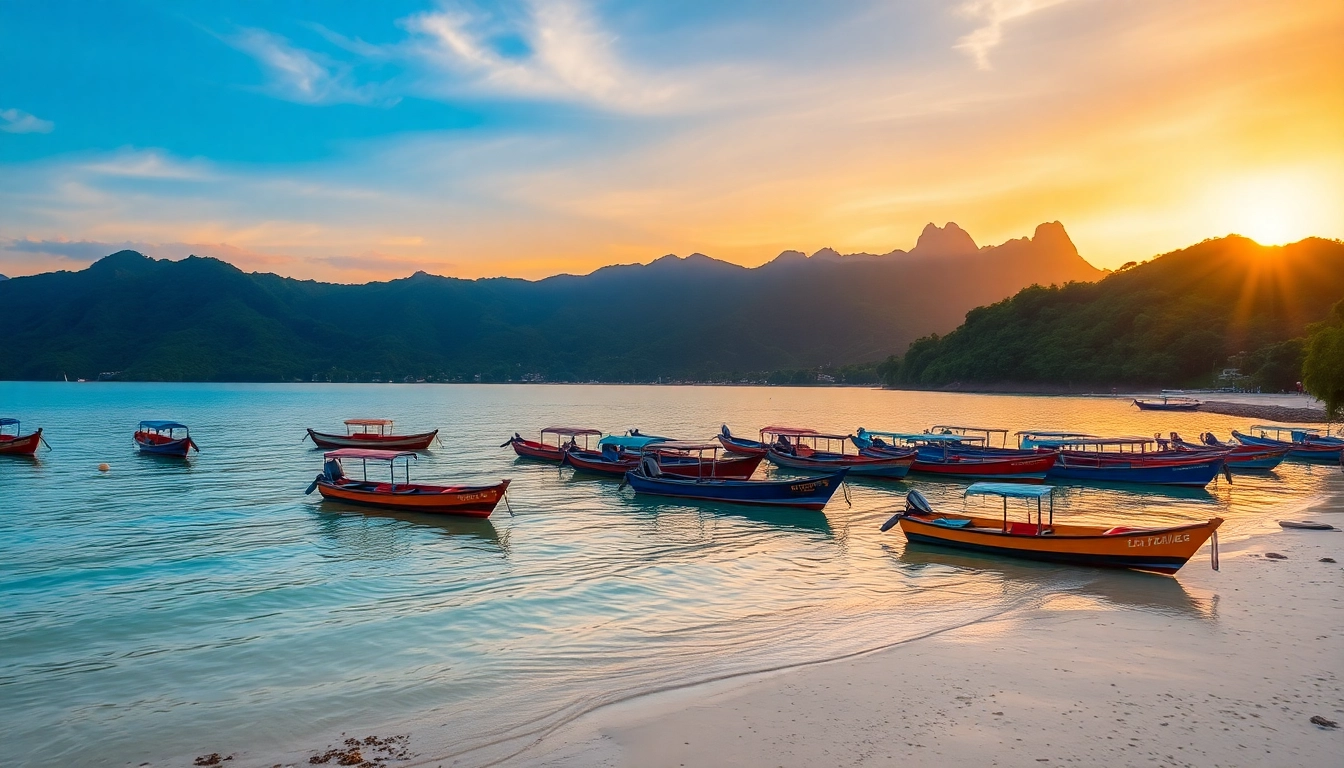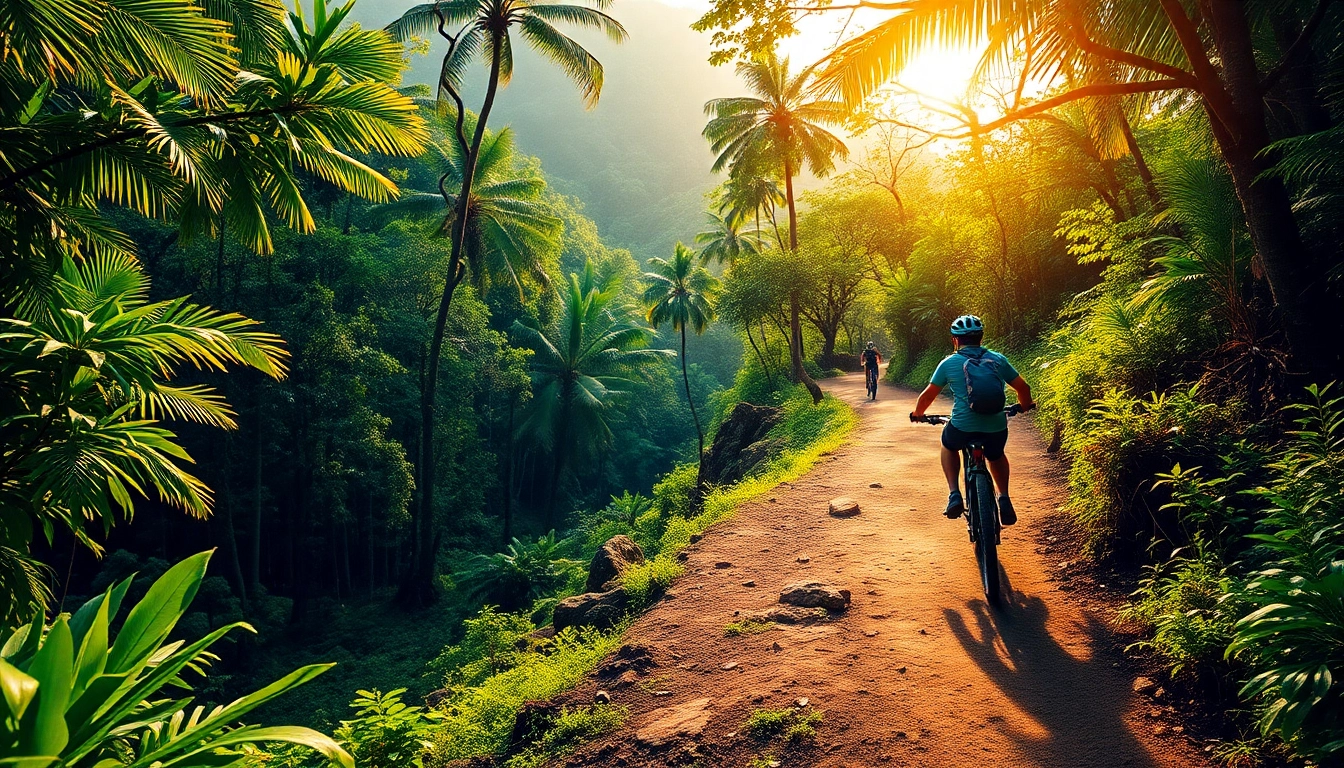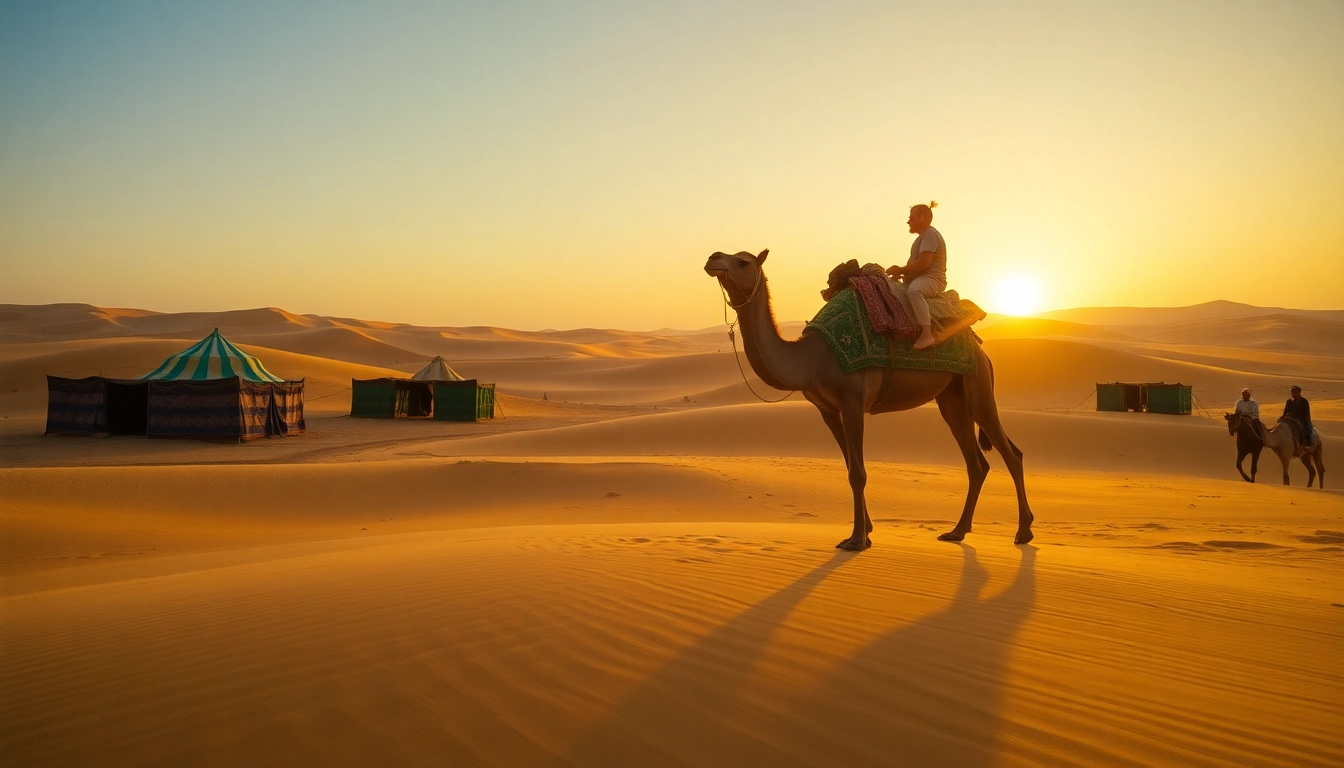Introduction to Lombok: Indonesia’s Charm and Natural Beauty
Nestled within the Indonesian archipelago, Lombok is a captivating island that offers an enchanting blend of natural splendor, rich cultural heritage, and adventure tourism. Often overshadowed by its neighbor Bali, Lombok remains a pristine haven for travelers seeking authentic experiences, untouched landscapes, and vibrant local traditions. With a unique geographical position in the Lesser Sunda Islands, Lombok’s diverse ecosystems and compelling cultural tapestry make it a must-visit destination for explorers seeking both relaxation and adventure.
History and Cultural Heritage of Lombok
Lombok boasts a rich history that dates back centuries, rooted in indigenous traditions and a history of maritime trading. The island’s cultural fabric is predominantly woven through the Sasak people, who have preserved their language, customs, and artisan traditions despite the influences of Islam and external civilizations. The ancient villages such as Sade and Sukarara are living museums of Lombok’s traditional crafts, including weaving, pottery, and wood carving.
The Islamic faith is evident in the island’s architecture and religious practices, with beautiful mosques and vibrant festivals marking the cultural calendar. One of the most significant heritage sites is the Pura Lingsar, a sacred temple that symbolizes religious harmony between Hindu and Muslim communities, reflecting Lombok’s unique cultural blend. Over the centuries, Lombok has also experienced colonial influences from the Dutch, evident in historical sites and colonial architecture scattered across the island.
Understanding Lombok’s history enriches the visitor’s experience, providing context to the island’s vibrant traditions and cultural expressions. Visitors are encouraged to participate in local ceremonies, explore traditional markets, and learn from community artisans to gain a deeper appreciation of Lombok’s heritage.
Geography and Key Regions of Lombok
Lombok spans approximately 4,700 square kilometers, characterized by rugged volcanic mountains, lush forests, and pristine beaches. Its diverse topography divides the island into distinct regions, each offering unique attractions and experiences.
The western coast, including areas like Lombok Barat (West Lombok), is renowned for its beautiful beaches such as Tanjung Aan and Senggigi, popular for surfing, snorkeling, and beach lounging. Central Lombok is dominated by the majestic Mount Rinjani, Indonesia’s second-highest volcano, which stands as a formidable natural monument and a magnet for trekkers worldwide.
The northern region, including Lombok Utara (North Lombok), features scenic bays, waterfalls, and traditional fishing villages, illustrating the island’s serene coastal charm. The southern part, especially the area around Kuta Lombok, is known for its surf breaks and vibrant nightlife, catering to young travelers and surfers.
Additional regions like Sumbawa (located to the east) offer further biodiversity, volcanic landscapes, and contrast to the more developed western side. Overall, Lombok’s remarkable geographical diversity supports a wide range of activities, from eco-tourism to cultural exploration.
Why Lombok Continues to Attract Travelers
Several factors contribute to Lombok’s growing appeal as a global tourist destination. Its reputation as a serene alternative to Bali, combined with unspoiled natural beauty, makes it increasingly popular among travelers seeking authenticity. The island’s warm climate, friendly local communities, and rich cultural traditions offer immersive experiences that are hard to find elsewhere.
Furthermore, Lombok’s outdoor activities, including trekking Mount Rinjani, diving in vibrant coral reefs, and surfing on world-class waves, appeal to adventure enthusiasts. Its affordability compared to other Indonesian destinations also makes it accessible to a broad demographic of travelers.
In recent years, the development of eco-tourism initiatives and sustainable travel practices has helped preserve Lombok’s environment, making it more attractive to eco-conscious visitors. Ultimately, Lombok’s combination of pristine landscapes, cultural richness, and adventure opportunities creates an enticing package for diverse travelers worldwide.
Top Tourist Destinations in Lombok
Beaches and Islands: Gili Trawangan & Tanjung Aan
Lombok’s beaches are renowned for their white sands, turquoise waters, and clear visibility—ideal for relaxation, water sports, and underwater exploration. Gili Trawangan, part of the Gili Islands off the northwest coast, is perhaps the most famous for its lively nightlife, scuba diving sites, and vibrant marine life. It offers a lively atmosphere for backpackers and party-goers, while still providing opportunities for snorkeling with turtles and exploring coral reefs.
Meanwhile, Tanjung Aan, located on the southern coast, boasts a tranquil environment with wide stretches of soft white sand suitable for sunbathing, picnics, and leisurely walks. Its shallow waters make it suitable for swimming and family outings, and the surrounding rural landscape offers stunning vista points for photography.
Additional pristine beaches such as Selong Belanak and Mawun Beach cater to surfers and beach lovers alike, with many surf schools offering lessons and equipment rentals. Exploring these beaches provides a comprehensive understanding of Lombok’s coastal diversity and the activities they support.
Mount Rinjani: Indonesia’s Second Highest Volcano
Rising majestically to 3,726 meters, Mount Rinjani is the crown jewel of Lombok’s natural attractions. As Indonesia’s second-highest volcano, it offers awe-inspiring vistas, challenging treks, and sacred sites. The Rinjani trekking trail typically takes 2-3 days, passing through forests, hot springs, and volcanic craters, culminating in breathtaking views of the caldera lake, Segara Anak.
The trek is suitable for experienced hikers but also has options for guided day excursions for those less experienced. Many adventure tourists consider climbing Rinjani a spiritual and physical journey, offering insights into volcanic geology, local folklore, and the island’s volcanic history. The Rinjani National Park, designated as a UNESCO Biosphere Reserve, also protects diverse flora and fauna, making it an ecological treasure.
Careful planning, appropriate gear, and awareness of weather conditions are essential for a safe ascent. Local guides and tour operators provide comprehensive services, ensuring a memorable and responsible adventure experience.
Rich Marine Life and Snorkeling Spots
Lombok’s waters are teeming with marine biodiversity, making it a diver and snorkeler’s paradise. Sites like Gili Air and Gili Meno, part of the Gili Islands, are famous for their vibrant coral reefs and abundant wildlife, including sea turtles, reef sharks, and an array of colorful fish. Snorkeling here is accessible even for beginners, with shallow coral gardens and clear waters providing excellent views.
The Batu Bolong and Shark Point dive sites offer more advanced options for experienced divers seeking to explore deeper waters and encounter larger marine species. The pristine coral reefs are part of Indonesia’s Coral Triangle, recognized globally for their ecological significance.
Eco-tourism initiatives focus on marine conservation and responsible tourism, encouraging visitors to participate in reef preservation activities, such as coral planting and beach clean-ups.
Experiencing Lombok’s Culture and Traditions
Local Villages and Handicrafts
Lombok’s rural villages serve as living museums of traditional Sasak culture, with artisans practicing age-old crafts passed down through generations. Sukarara village is famous for its intricate weaving and textiles, where visitors can observe artisans at work and even participate in weaving workshops. Similarly, the village of Banyumulek specializes in pottery, showcasing traditional clay crafting techniques that produce both functional and decorative items.
Visitors are encouraged to explore these villages to gain authentic insights into local life, engage with artisans, and purchase handmade souvenirs directly from the creators. These experiences support local economies while fostering cultural preservation.
Festivals and Cultural Events
Lombok’s vibrant festivals provide a deep dive into its cultural identity. The Bau Nyale Festival, celebrated around the lunar calendar, involves catching sea worms called Nyale, which are believed to be a manifestation of Princess Mandalika’s legend. This event features traditional music, dance, and mass gatherings, serving as a celebration of local folklore and Marine cultural heritage.
Other festivals, such as the Lombok Art Festival and Muslim Eid celebrations, showcase traditional performances, craft exhibitions, and culinary delights. Participating in these events offers authentic cultural experiences and a chance to interact with local communities.
Authentic Culinary Delights
Lombok’s cuisine reflects its cultural diversity, emphasizing bold flavors and fresh ingredients. Signature dishes include Ayam Taliwang—a spicy grilled chicken marinated with local spices—Sate Rembiga, and Plecing Kangkung, a traditional vegetable salad served with sambal and lime. Seafood is abundant and often cooked fresh daily at local warungs (small eateries).
Street food markets and local restaurants provide immersive culinary experiences, allowing visitors to indulge in authentic flavors and learn about the island’s food traditions. Cooking classes are also available for those interested in mastering Lombok’s culinary secrets.
Adventure and Eco-Tourism in Lombok
Trekking, Surfing, and Water Sports
Lombok is a playground for outdoor enthusiasts. The island’s varied terrain offers excellent trekking routes, especially around Mount Rinjani, while its beaches are ideal for surfing, snorkeling, diving, and kayaking. Kuta Lombok has gained international fame as a surfing hub with consistent waves suitable for beginners and advanced surfers alike.
Water sports enthusiasts can participate in stand-up paddleboarding, jet skiing, and parasailing, supported by numerous local operators emphasizing safety and eco-responsibility. Adventure tourism has also expanded into mountain biking and paragliding, offering adrenaline-pumping options for thrill-seekers.
Wildlife Conservation and Eco-Activities
Eco-tourism initiatives focus on protecting Lombok’s fragile ecosystems. Marine conservation projects involve coral reef restoration and sea turtle monitoring, with NGOs leading clean-up campaigns and educational programs. The island’s forests and national parks are ideal for birdwatching, wildlife photography, and guided eco-tours that promote sustainable exploration.
Visitors are encouraged to support eco-friendly accommodations, participate in local conservation efforts, and respect natural habitats to ensure Lombok remains pristine for future generations.
Unforgettable Eco-Lodges and Resorts
Lombok’s eco-lodges and resorts combine luxury with sustainability. Many are built with eco-friendly materials, utilizing renewable energy sources and implementing waste reduction practices. These accommodations often offer immersive experiences such as farm tours, cooking classes, and guided nature walks, providing a holistic sustainable travel experience.
Practical Travel Tips and Planning Your Visit
Best Time to Visit Lombok
The optimal time to experience Lombok is during the dry season, from May to September, when the weather is warm, and rainfall is minimal. This period offers clear skies for beach activities, trekking, and outdoor adventures. The shoulder months of April and October can also be suitable, providing calmer crowds and favorable weather conditions. Avoid the rainy season between November and March, which may hamper outdoor plans and increase travel challenges.
Transportation and Getting Around
Getting around Lombok is facilitated through a combination of options. The most common mode is renting a scooter, which provides flexibility in exploring remote beaches and rural villages but requires caution due to mountain roads and traffic. Car rentals with or without a driver are recommended for families or groups seeking comfort and safety.
Public transportation options are limited, so most travelers rely on private taxis, ride-hailing services, or organized tours. Domestic flights connect Lombok International Airport with Jakarta, Bali, and other regional destinations, making it accessible for international visitors.
Accommodation Options and Local Hospitality
Lombok offers diverse lodging choices, from luxurious resorts and boutique hotels to budget hostels and homestays. Many accommodations are situated along popular beaches or scenic mountainous areas, providing spectacular views and direct access to activities.
Hospitality is renowned, with local guides and hosts offering warm, personalized service. Travelers are encouraged to choose eco-friendly lodgings that align with sustainable tourism practices, supporting conservation and community welfare initiatives.
Before booking, consider reviews, proximity to attractions, and the availability of onsite amenities to tailor your stay to your preferences and travel plans.




